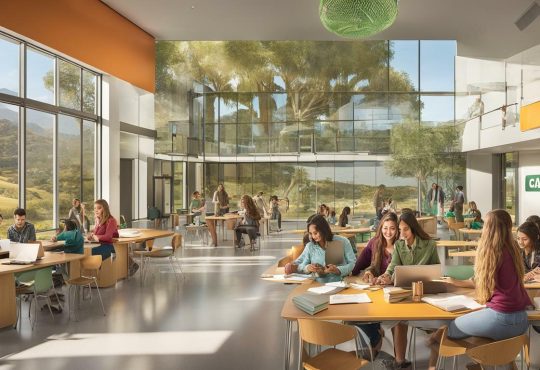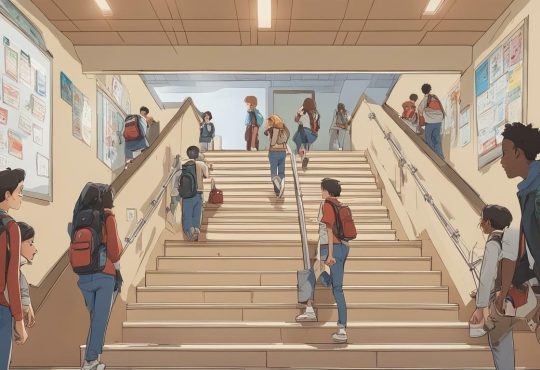
How Long Is Barber School?
For aspiring barbers, one of the most important considerations when choosing a Barber School is the duration of the program. Barber School programs vary in length, depending on factors such as the type of program, state requirements, and the individual pace of learning. In this article, we’ll explore the different types of barber school programs and the duration associated with each. We’ll also discuss the factors that can affect the duration of barber school, from licensing requirements to the curriculum.
Key Takeaways:
- The duration of barber school programs varies based on a range of factors, including the type of program and state requirements.
- Full-time barber school programs typically take around 9 months to complete, while part-time programs can take up to 2 years or more.
- Barber apprenticeships are an alternative to traditional barber school programs, but require a longer time commitment.
- The specific curriculum and amount of practical training can impact the duration of barber school.
- State licensing requirements also influence the duration of barber school.
Understanding Barber School Programs
Barber school programs are designed to equip students with the skills and knowledge required to become a professional barber. These programs are available in a variety of different formats and durations, depending on the specific school and the state in which it is located.
Types of Barber School Programs
There are three main types of barber school programs, each with their own unique duration:
| Program Type | Duration |
|---|---|
| Full-Time | 9-12 months |
| Part-Time | 2-4 years |
| Apprenticeship | 1-2 years |
The duration of each program may also depend on the specific curriculum offered by the school and the state’s barbering licensing requirements.
Full-Time Barber School Programs
Full-time barber school programs typically take 9 to 12 months to complete. These programs require a full-time commitment, meaning students attend classes and complete training for 35-40 hours a week. Full-time programs are the most common option for students who want to complete their training and start working as a professional barber as soon as possible.
Part-Time Barber School Programs
Part-time barber school programs are designed for students who want to pursue barbering education while still maintaining their current job or other commitments. These programs typically take 2 to 4 years to complete, as classes are only held in the evenings or on weekends. Part-time programs may offer greater flexibility but may take longer to complete than full-time programs.
Barber Apprenticeship
Becoming a barber through an apprenticeship is a less common but still viable option. Apprenticeships typically take 1 to 2 years to complete and involve working under the supervision of a licensed barber. Apprenticeship programs offer hands-on experience and allow students to earn a wage while completing their training, though they may not provide the same level of education as traditional barber school programs.
Understanding the different types of barber school programs and their associated durations can help aspiring barbers choose the program that best suits their needs and goals.
Full-Time Barber School Programs
Full-time barber school programs offer students an intensive and immersive experience, allowing them to complete their education in a shorter period of time than part-time programs. Typically, full-time barber school programs can be completed in as little as 9 months, but this can vary depending on the specific program and state requirements.
Students attending full-time barber school programs can expect to spend anywhere from 30 to 40 hours per week in the classroom, learning the theory and practical skills required to become a skilled barber. The curriculum for full-time programs generally includes a mix of classroom instruction, hands-on training, and practical experience working with clients.
Benefits of Full-Time Barber School Programs
One of the main benefits of attending a full-time barber school program is the ability to complete your education quickly. This allows you to enter the workforce sooner and start earning a living as a barber.
Additionally, full-time barber school programs offer a more structured and immersive learning experience, with instructors who are available for one-on-one guidance and support throughout the program. This can be particularly beneficial for students who are new to the field and may need extra help mastering the skills required to be a successful barber.
Part-Time Barber School Programs
For individuals who cannot commit to a full-time barber school program due to work or personal obligations, part-time programs are a viable option. Part-time barber school programs allow students to complete their education at a flexible pace, which is ideal for those with prior commitments or who prefer a slower learning speed. However, these programs often require a longer time commitment than full-time programs.
The duration of part-time barber school can vary depending on the program and individual factors. On average, part-time programs can take anywhere from 12 to 24 months to complete. This duration is significantly longer than the typical 9-month full-time program. However, this extended time frame allows students to balance their education with other responsibilities, without compromising their learning experience.
Part-Time Barber School Curriculum
The curriculum for part-time barber school programs is similar to that of full-time programs, covering topics such as hair cutting, shaving, styling, and customer service. However, the duration of each subject is often stretched out to accommodate the reduced weekly hours of class time.
Part-time programs also provide the opportunity for students to experience hands-on training and practical application, although this may be scheduled differently than in full-time programs. It is important to research each school’s specific program to better understand the curriculum and the time commitment required.
While part-time programs are a great option for those with prior commitments or a preference for a slower pace of learning, it is important to note that they are not offered at all barber schools. It is essential to research schools and programs carefully and choose one that aligns with your personal and professional goals.
Barber Apprenticeship
Another option for becoming a barber is through an apprenticeship. While the length of an apprenticeship can vary, most programs last between two and three years. During this time, apprentices work under the guidance of a licensed barber, gaining hands-on experience and practical knowledge.
Apprenticeships typically require a certain number of hours of on-the-job training, as well as classroom education in topics such as sanitation, safety, and customer service. Apprentices are also required to take and pass a state board exam to become a licensed professional.
One benefit of an apprenticeship is the flexibility it offers, allowing aspiring barbers to work and earn a wage while learning the trade. However, apprenticeships can also be more challenging to find and may require a greater time commitment than traditional barber school programs.
Factors Affecting Barber School Duration
The length of time required to complete a barber school program can vary depending on a variety of factors, including the specific curriculum, state licensing requirements, and the individual pace of learning. Here are some factors that can impact barber school duration:
| Factor | Description |
|---|---|
| State Requirements | Each state has different licensing requirements for barbers, which can impact the duration of barber school. Some states may require more hours of training or specific areas of study, which could extend the time required to complete the program. |
| Curriculum | The specific curriculum of a barber school program can affect its duration. Some programs may offer more comprehensive training or cover additional topics, which can add time to the program. |
| Full-Time vs. Part-Time | Attending barber school on a full-time or part-time basis can impact the duration of the program. Full-time programs typically take less overall time to complete, whereas part-time programs may take longer due to the reduced class schedule. |
| Individual Pace | The amount of time it takes to complete barber school can also depend on the individual’s pace of learning. Some students may complete the program more quickly, while others may require more time to fully grasp the concepts and skills being taught. |
Ultimately, the duration of barber school can vary from person to person and program to program. However, understanding the various factors that can impact the length of the program can help individuals make informed decisions about their education and career path.
State Licensing Requirements
Each state has its own requirements for licensing professional barbers. These requirements include completing a certain amount of classroom education and practical training, passing a written exam, and sometimes passing a practical exam as well.
The duration of barber school for licensing can vary based on the specific requirements of the state. Some states may require less than 1,000 hours of education and training, while others may require more than 2,000 hours. It’s important to research the requirements in your state to determine the length of time you will need to dedicate to barber school.
Additionally, some states may have reciprocity agreements with other states, meaning that barbers licensed in one state may be able to obtain licensure in another state without completing additional education or training. It’s important to research the reciprocity agreements between states if you plan on practicing in multiple locations.
Barber School Curriculum
The curriculum of a barber school program typically covers a wide range of topics related to the practice of barbering. The curriculum may vary from one school to another, but some subjects are generally consistent across most programs.
| Subject | Duration |
|---|---|
| Barbering history and culture | 1-2 weeks |
| Sanitation and safety | 1-2 weeks |
| Tools and equipment | 2-3 weeks |
| Facial hair design and shaving | 2-3 weeks |
| Haircutting techniques | 4-6 weeks |
| Chemical processes and hair coloring | 3-4 weeks |
| Customer service and business management | 2-3 weeks |
Note: The numbers shown in the table are rough estimates and may vary depending on the specific school and program.
The curriculum is designed to equip students with the knowledge and practical skills necessary to become successful barbers. Students will learn to use various tools and techniques to cut and style hair, trim and shape facial hair, and perform other services such as scalp treatments and hair coloring.
Furthermore, students will develop an understanding of sanitation and safety procedures to ensure that their services are delivered in a clean and safe environment. They will also learn about customer service and business management, including how to interact with clients and manage finances.
Practical Training and Hands-On Experience
Practical training and hands-on experience are crucial components of barber school programs, helping students gain the necessary skill set for a successful career. Most barber schools dedicate a significant portion of their curriculum to practical training, allowing students to practice on real clients under the supervision of trained professionals.
The amount of time dedicated to practical training varies from program to program, but it typically ranges from 800 to 1,200 hours. During this time, students learn the techniques necessary to cut and style hair, shave, trim beards, and use various tools and equipment effectively. They also learn about sanitation and hygiene practices to ensure a clean and safe environment for clients.
The hands-on experience gained during barber school is beneficial for many reasons. It allows students to apply the theory they learn in the classroom to real-world situations, helping them develop the ability to work well under pressure and think on their feet. It also allows them to build a portfolio of work that can be used to showcase their skills to potential employers or clients.
In addition to the practical training received during barber school, many programs require students to complete an apprenticeship as part of their education. This apprenticeship provides even more hands-on experience, allowing students to work under the guidance of experienced barbers and learn about the business side of the industry.
Benefits of Practical Training and Hands-On Experience
- Develop necessary skills for a successful career
- Apply theory to real-world situations
- Build a portfolio of work
- Learn from experienced barbers
- Gain knowledge about the business side of the industry
- Prepare for state board exams
Practical training and hands-on experience are essential components of barber school programs. They provide students with the necessary skills to succeed in their careers and allow them to apply theory to real-world situations. With the guidance of experienced barbers and the opportunity to build a portfolio of work, graduates are well-prepared to start their journey as certified professional barbers.
Becoming a Certified Professional Barber
Completing a barber school program is a fundamental step towards becoming a certified professional barber. By completing a comprehensive curriculum and gaining practical experience, you will develop the skills and knowledge required to excel in the field.
Becoming a barber involves dedication, long hours of study and practice, and a commitment to delivering quality service. After completing a barber school program, you will need to take and pass a state licensing exam to become a certified professional barber.
The Journey to Becoming a Barber
The journey to becoming a professional barber is a rewarding one. It begins with choosing the right barber school program that aligns with your career goals, lifestyle, and learning style. While barber school duration varies by program, your dedication to mastering the skills and knowledge required to succeed as a barber will determine your success.
Once you complete barber school, you will need to obtain your state license to practice as a professional barber. This typically involves taking exams and meeting your state’s specific licensing requirements, including a minimum number of hours in practical training and theoretical instruction.
The Significance of Completing a Barber School Program
Completing a barber school program is critically important for anyone considering a career in barbering. Barber school programs provide comprehensive training in the fundamental skills and knowledge required to excel in the field.
By completing a formal barbering program, you will gain practical experience in all aspects of the barbering trade, including haircutting and styling, beard grooming, and scalp and facial treatments. Additionally, you will learn critical business skills necessary to run your own barbering business or work in an established barber shop.
Beyond the skills and knowledge required to practice as a professional barber, completing a barber school program demonstrates your commitment to the profession. Employers and clients alike value the training, discipline, and passion that barber school graduates bring to their work. By completing a barber school program and becoming a certified professional barber, you will join an esteemed community of professionals dedicated to delivering the highest quality service to their clients.



